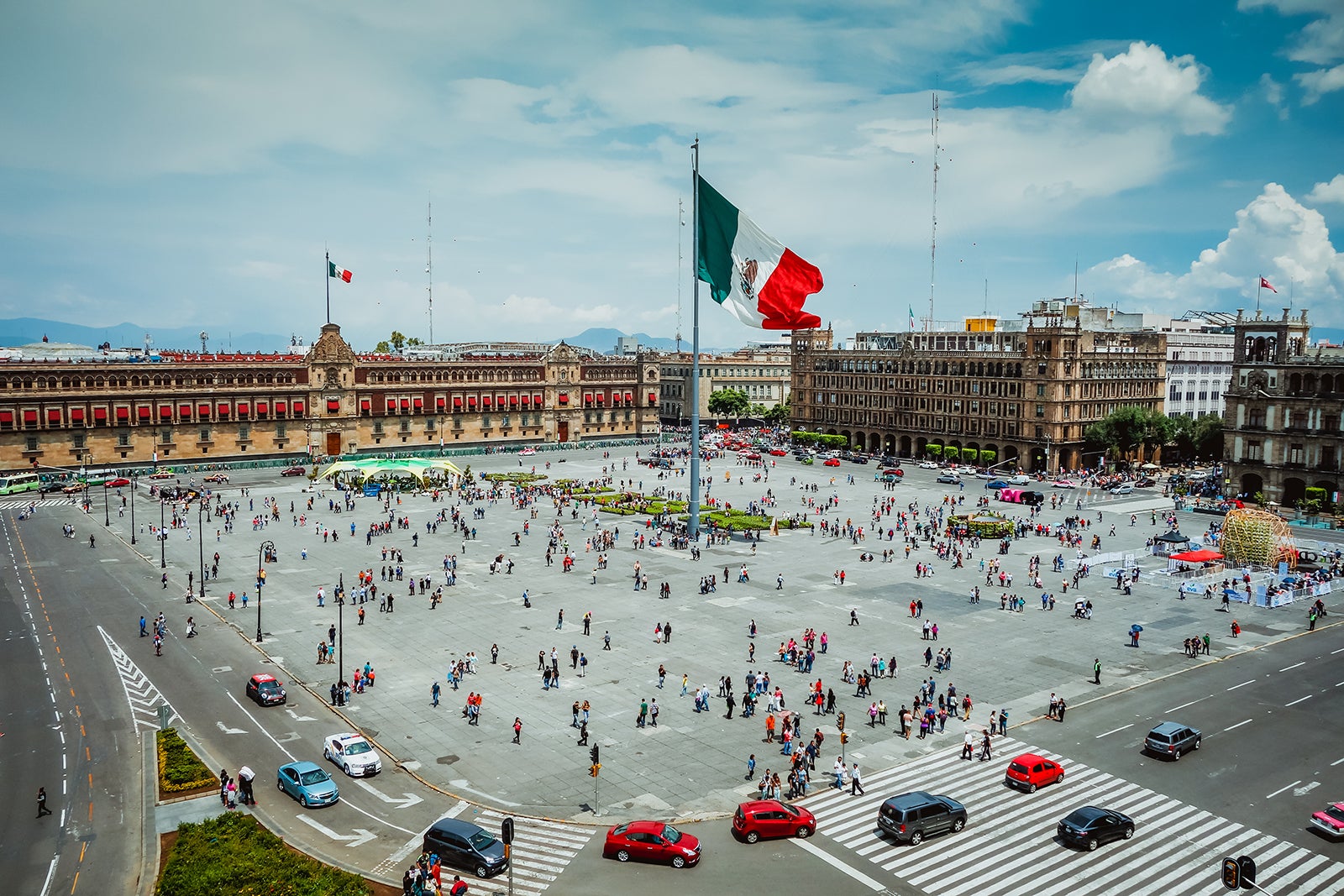
For 700 years, Mexico City’s public square, known as the Zócalo, has been the place where many of the nation’s most significant events unfolded.
Benjamin Bross, an architecture professor and urban historian at the University of Illinois Urbana-Champaign, wrote an urbanism-based cultural history of the Zócalo, using the public square and historic events that took place there to explain the emergence and evolution of Mexican identities over time. His recently published book, “Mexico City’s Zócalo: A History of a Constructed Spatial Identity,” explores how spaces embody sociocultural identity and how identity is shaped by those spaces.
“Our attachment to spaces produces a sense of place. In many ways, we generate a sense of who we are by the places we live and how we experience them. I believe that environments shape, to some degree, the way we view the world,” Bross said.
The Zócalo is a public space that all Mexicans can share, and the plaza and its activities are products of social, cultural, economic and political values found across the different components of Mexican society – the state, the powerful and elite, the working class and the marginalized, Bross said.
“In a nation as regionally diverse as Mexico, with hundreds of ethnicities, cultures and living languages and dialects, few things or places are perceived as common to all Mexicans as the shared embrace of the Zócalo as the country’s symbolic heart,” he wrote.
Throughout Mexico’s history, its various national identities have played out there, starting with the migration of the Mexica (Aztecs) to the Valley of Mexico. Surrounded by other Indigenous groups who had arrived earlier, the Mexica claimed an unoccupied island in the middle of a lake, where they built their capital, Tenochtitlan. The city’s Sacred Precinct contained palaces, temples and other ceremonial buildings, with a marketplace next to it – the first incarnation of what would become the Zócalo.
After the Spanish conquest of the region, the invaders demolished the Sacred Precinct and built their new capital in the same place, using stone from Mexica structures to construct churches, palaces and administrative buildings for Spaniards, Bross said. Initially named Plaza Mayor by the Spanish, the space was renamed Plaza de la Constitución in honor of Spain’s 1812 Constitution of Cadiz, which remains the public square’s formal name.
In 1624, citizens rioted after the Spanish viceroy initiated severe political and market reforms that included the arrest and expulsion of Mexico’s archbishop. Bross said the event changed the nature of the space from a passive marketplace to a contested political space.
 The Zócalo was the backdrop to a major moment in Mexico’s independence from Spain, as well. Mexican Independence Gen. Augustín de Iturbide marched into the plaza in 1821 with the Army of the Three Guarantees behind him, “reaffirming the plaza’s central role as a major civic space,” Bross said. “He rode into the plaza to show that Mexicans were in control now. An agreement with the Spanish crown for independence had already been signed. This was really all about staging and imagery.”
The Zócalo was the backdrop to a major moment in Mexico’s independence from Spain, as well. Mexican Independence Gen. Augustín de Iturbide marched into the plaza in 1821 with the Army of the Three Guarantees behind him, “reaffirming the plaza’s central role as a major civic space,” Bross said. “He rode into the plaza to show that Mexicans were in control now. An agreement with the Spanish crown for independence had already been signed. This was really all about staging and imagery.”
Events at the Zócalo also have changed the way Mexicans think about their national identity. For example, Bross said, photographs of civilian casualties from the 1913 coup during the Mexican Revolution, known as Tragic Ten Days, galvanized the country’s citizens and unleashed the bloodiest part of the conflict.
“This is the heart of the nation, and here are these young people, not just loyal soldiers to a democratically elected government who have been felled in defense of a democratically elected president, but also innocent bystanders who happened to be at the wrong place at the wrong time. It was a wake-up call,” Bross said.
The same was true of a brutal putdown of student protests preceding the 1968 Mexico City Olympics. The protests started in the Zócalo and ended days later in a nearby neighborhood, Tlatelolco, where the government violently dispersed the protestors, leading to the deaths of hundreds of students.
“It made a lot of Mexicans realize that the state wasn’t a democratic one. It began a true pushback against the single party rule since the 1920s,” Bross said.
At the same time, the Zócalo maintained its symbolic importance by being the location of the start of the 1968 Olympic marathon event. It was “a clear indication of how the Mexican games’ organizers felt the crowning moment of the Olympics should be in the Zócalo,” he said.
Another major transformation occurred in 1997, when the city established a policy enabling the plaza as a place of peaceful protest.
“That’s a very big moment. It’s a hallmark of a truly democratic society to have places where people can protest without fear of state repression,” Bross said.
“With each transformation, its spatial identity has been enriched,” he said of the Zócalo. “Spaces matter. They inform and shape our attitudes and relations in the public realm, and therefore to each other as we form community.”


Leave a Reply